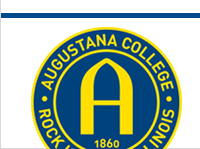Document Type
Presentation
Publication Date
7-2023
Disciplines
Economics | History | Religion | Sociology
Description, Abstract, or Artist's Statement
This paper examines household charitable giving in the period just before the New Deal increased government involvement in social services. The 1918-19 BLS Cost of Living Survey provides a window on middle-class giving to church, charity, and patriotic organizations, as well as investment in Liberty Bonds. A lognormal hurdle model is used to estimate the probability of any giving, and the amount given, to different types of organizations. From this, we estimate income elasticities of giving and the substitutability of giving to different types of organizations. The results are compared to findings from studies on modern giving. I find that giving to similar types of organizations was complementary in this time period. Church giving was particularly income inelastic. In contrast with today, families living in the northeast were most likely to give to churches. I consider a few explanations for this result.
Augustana Digital Commons Citation
Short, Joanna. "Household Charitable Giving among U.S. Working-Class Families, 1918-1919" (2023). Economics: Faculty Scholarship & Creative Works.
https://digitalcommons.augustana.edu/econfaculty/2
